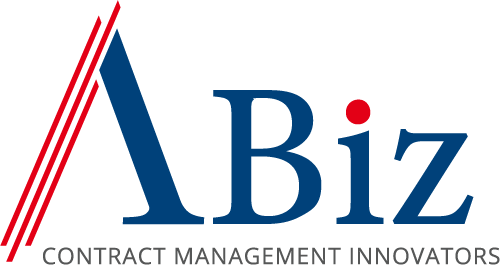As discussed in our blog, Fundamentals of Commercial Contract Risk, risk is inevitable in contract management. However, not all risks carry the same weight. Among them, financial risk stands out as one of the most consequential. When mismanaged, it can erode profits, strain cash flow, and even jeopardize the stability of an organization. This blog takes a deep dive into financial risks in contract management, identifying key areas where losses can creep in and exploring strategies to mitigate them before they impact your bottom line.
Some financial risks are an inherent part of doing business. While a well-executed financial risk management plan can address many issues, like missed delivery dates or payments, it may not fully mitigate other risks, such as the fallout from natural disasters or extreme market downturns that impact contract terms and conditions. Understanding and actively monitoring these risks is crucial for financial resilience. Key areas to watch include:
- Currency Fluctuations: If payments are made in foreign currency, even minor changes in exchange rates can lead to a significant financial impact.
- Customer Stability: A customer’s financial health can change unexpectedly, affecting payment timelines and overall project cash flow.
- Built-in Price Decreases: Contracts that include year-over-year price reductions or guaranteed savings clauses can erode profitability over time.
- Actual Cost vs. Bid Model: Monitor actual project or account costs compared to the initial bid model, as cost overruns can lead to substantial financial losses.
- Scope Creep and Unapproved Changes: Changes beyond the original contract scope can lead to revenue leakage if not properly documented and priced.
- Payment Terms and Cash Flow Impact: Long payment cycles or extended net terms (e.g., Net 90) can create cash flow challenges, especially for smaller businesses.
- Supplier Financial Stability: If key suppliers face financial distress, it may lead to supply chain disruptions, cost increases, or even contract renegotiation.
- Penalties and Liquidated Damages: Contracts with strict performance clauses may impose financial penalties for delays, non-compliance, or failure to meet SLAs.
- Termination Clauses and Exit Costs: Unfavorable termination provisions may impose high exit costs or penalties for early contract termination.
- Inflation and Cost Escalation: Long-term contracts without built-in inflation adjustments can result in decreasing profitability as costs rise over time.
Tools and Technologies for Financial Risk Management
Effectively managing financial risk in contracts requires more than just awareness. It requires the right tools and processes to detect, assess, and mitigate risks before they become costly problems. The following tools and technologies can help contract managers and finance teams identify financial risks early and take proactive measures.
- Contract Lifecycle Management (CLM) Systems: CLM software provides centralized contract data, making it easier to track financial obligations, pricing structures, and penalty clauses. These systems automate alerts for upcoming renewals, payment deadlines, and pricing adjustments, ensuring financial risks don’t go unnoticed. Additionally, CLM platforms help identify unfavorable terms, such as auto-renewals, price escalation clauses, and one-sided termination provisions that could negatively impact profitability.
- Financial Analytics & Forecasting Tools: Financial analytics platforms like Microsoft Power BI, Tableau, and Oracle EPM/Hyperion enable organizations to track contract performance against budgeted expectations. These tools analyze cost overruns, revenue leakage, and profitability trends in real time, allowing finance teams to take corrective action. They also provide “what-if” scenario analysis, helping businesses assess financial risk exposure under different conditions, such as inflation spikes, interest rate changes, or supply chain disruptions.
- Risk Management Software: Enterprise Risk Management (ERM) solutions like SAP Risk Management, LogicManager, and Archer help organizations map potential financial risks across their contract portfolios. These platforms quantify financial exposure related to supplier or customer instability, automating risk assessments and compliance tracking. By integrating with other financial systems, they provide a holistic view of financial risk across different contractual agreements.
- AI-Powered Contract Analysis: Artificial intelligence tools such as Evisort, Kira, and Luminance use machine learning to scan and analyze contract terms for financial risk. These platforms detect risky clauses related to pricing structures, penalties, or force majeure provisions. They also compare new agreements against past contracts to identify deviations in financial terms, highlighting potential areas for renegotiation or cost savings.
- Currency Risk Management Tools: For businesses dealing with multi-currency contracts, platforms like Bloomberg Terminal, Kyriba, and SAP Treasury help track foreign exchange fluctuations and hedge currency risk. These tools automate currency rate updates within financial models, ensuring contract pricing remains competitive despite market volatility. By mitigating foreign exchange risk, businesses can prevent unexpected financial losses due to currency depreciation or unfavorable exchange rate movements.
- Vendor and Supply Chain Risk Monitoring: Third-party risk management platforms such as Resilience360, Sphera Supply Chain Risk Management (formerly RiskMethods), and Prevalent assess supplier financial stability and risk exposure. These tools monitor geopolitical and economic factors that could impact supplier contracts, identifying potential disruptions in the supply chain that may lead to increased costs. By proactively managing vendor risk, businesses can prevent financial losses due to supply chain failures or unexpected price hikes.
- Financial Risk Checklist: A practical tool that helps contract managers systematically identify, assess, and mitigate financial risks throughout the contract lifecycle. Organizations can use a structured checklist to ensure that key financial aspects, such as payment terms, cost controls, pricing adjustments, and risk exposure, are thoroughly evaluated at every stage. This proactive approach minimizes financial surprises, enhances contract profitability, and strengthens overall business stability.
By integrating these tools into contract management processes, organizations can gain greater visibility into financial risks and proactively mitigate them.
In Conclusion
Financial risk management, as it pertains to contracts, is about balancing potential risks with your company’s ability to mitigate liabilities before they become costly problems. Contract managers play a crucial role in evaluating key financial factors, such as contract value, costs, cash flow, profitability, and compliance, to ensure contracts remain financially viable throughout their lifecycle. A well-implemented financial risk management plan keeps contracts on track and profitable and strengthens overall business stability and long-term sustainability. Proactively managing financial risk isn’t just a best practice; it is a necessity for safeguarding profitability and securing a competitive edge.
To learn more about how ABiz Corporation can help your team manage financial risk in your contracts, schedule a free consultation today.
Author: Nancy Nelson, President, ABiz Corporation, Contract Management Innovators



